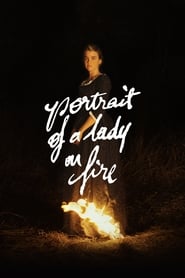Chris Stuckmann reviews Portrait of a Lady on Fire, starring Noémie Merlant, Adéle Haenel, Luàna Bajrami, Valeria Golino. But above all that, "Portrait of a Lady on Fire" is its own, wondrous, magnificent thing; a complete artistic vision where every directorial step is refined and each thematic probe, seamlessly weaved in. Adèle Haenel as Héloïse, left, and Noémie Merlant as Marianne in "Portrait of a Lady on Fire," directed by Céline Sciamma.
Every scene appears as though it was taken out of a masterpiece painting. A singularly rich period piece, Portrait of a Lady on Fire finds stirring, thought-provoking drama within a powerfully acted romance. When it comes to movies exemplifying the difference in the female gaze, allow Portrait of a Lady on Fire to be one of the prime examples.
Celine Sciamma's lesbian period film starts off as a story about looking, but its heart lies in less obvious, more suggestive cinematic elements. This review originally ran in February. We are republishing it on the occasion of the film's release on Hulu. Celine Sciamma's screenplay for Portrait of a Lady on Fire is stunning. Although many people won't mind this I would've personally preferred if they had lasted a tad longer. Writer-director Céline Sciamma's entrancing historical romance about a young painter and her subject is a perceptive, erotic exploration of power.
Trailer Portrait of a Lady on Fire
Read Common Sense Media's Portrait of a Lady on Fire review, age rating, and parents guide. Much of the movie is symbolic -- a portrait catching alight in the exact place the heart would be -- and at times it's as if we're inside a scene from a painting. The story begins with Marianne, a young painter who is teaching portraiture to a group of students.
One student, without Marianne's permission, digs That important intimacy of memory is a big part of Portrait of a Lady on Fire, too. Sciamma implies heavy use of voyeurism, as Marianne must slowly. But of course it doesn't explain them, not entirely. In Portrait Of A Lady On Fire, the subterfuge of the painter's process is at once a metaphor and a catalyst for the inconvenient blossoming of infatuation: the private motives of stolen glimpses, wandering eyes acting on directive of the heart.

